What is the value of leader-follower systems for dairy calves?
Heifer replacements in a spring-calving dairy herd are achieving average daily liveweight gains of 0.75kg from birth to calving, after a system of grazing them in paddocks six days ahead of the milkers removed coccidiosis infection from pasture.
Chris and Debbie Mossman’s February- and March-born calves are turned out in May. They had grazed youngstock in dedicated paddocks at Nant y Bach, Llangrannog, but this resulted in severe pasture contamination by a highly virulent species of coccidiosis.
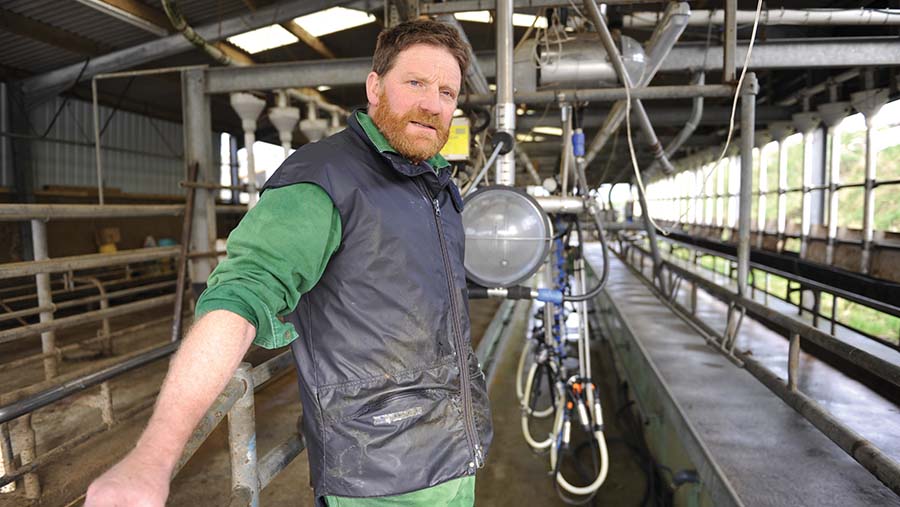
Chris Mossman © DebbieJames
This intestinal disease is usually seen in young beef and dairy calves aged between three weeks and six months.
See also: Q&A: How to prevent and treat coccidiosis in calves
To combat this, the Mossmans created a leader-follower system, grazing designated paddocks five to six days ahead of the 240-cow cross-bred milking herd and moving calves daily.
The species of coccidiosis on his farm could not be controlled by a commonly used anticoccidial drug – it required a more expensive product that was also less desirable for the environment, as it can harm aquatic organisms.
“The species we had has a lifecycle of 14-15 days, which is much shorter than the more common species, so we were getting serious levels of contamination,” says Mr Mossman.
“After introducing leader-follower grazing, we took dung samples every 12 days and got to the point where we found no infection.”
That system has been in place for four years and coccidiosis egg counts show there is no infection.
What are the rules of leader-follower grazing?
- Aim for a pre-grazing cover of 2,700-3,000kg DM/ha for the lead grazers.
- Graze to 2,100-2,250kg DM/ha for young calves.
- Move the leader group into a fresh paddock and turn followers into the grazed paddock.
- Followers should graze to a low residual, preferably 3.5-4.5cm.
- Protect regrowths by quickly removing the followers once the paddock is grazed to this residual.
- Allow pasture an adequate rest period by running a grazing rotation of 18-21 days from April to September.
- Monitor the follower group to check their performance is not being compromised.
“The calves do spectacularly well on this system,” Mr Mossman says.
From birth (35kg), calves are comfortably putting on 0.75kg/day to hit their pre-calving target of 535kg at 24 months of age.
Why the system works so well
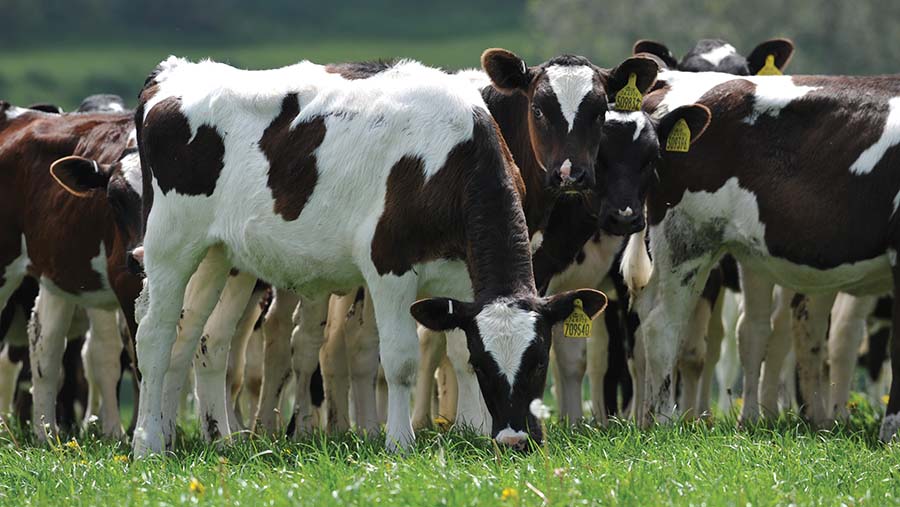
© Debbie James
As calves graze fresh grass daily, forage quality is high. “They graze the nicest bits of the paddocks, the top two or three inches everywhere,” explains Mr Mossman.
Milkers then come into the paddocks behind calves to mop them up and ensure good grass use.
“Young calves are a bit of a nightmare to graze, because they don’t do it very well. But the adult animals can be pushed harder to clean pasture down to required residuals,” says Mr Mossman.
Savings
The grass quality is so good that the Mossmans have been able to save money by cutting back concentrate feed.
Calves are fed concentrates for the first two weeks, while at grass, to train them to move between paddocks.
“We train to follow a quad and snacker for the first few weeks, making daily moves manageable.”
However, after two weeks, this is stopped. Calves had been fed 1kg a head a day, so the Mossmans are saving about £0.26-£0.28 a head a day.
“We get to the point where we no longer need to feed any concentrates after they have been at grass for two weeks, because they don’t want it. But they still follow the quad,” explains Mr Mossman.
Moving calves daily is important. “If calves are in a paddock for a long time, they soil parts of it, because they cluster in one area. But by moving them every day, there isn’t that disruption to pasture,’’ says Mr Mossman.
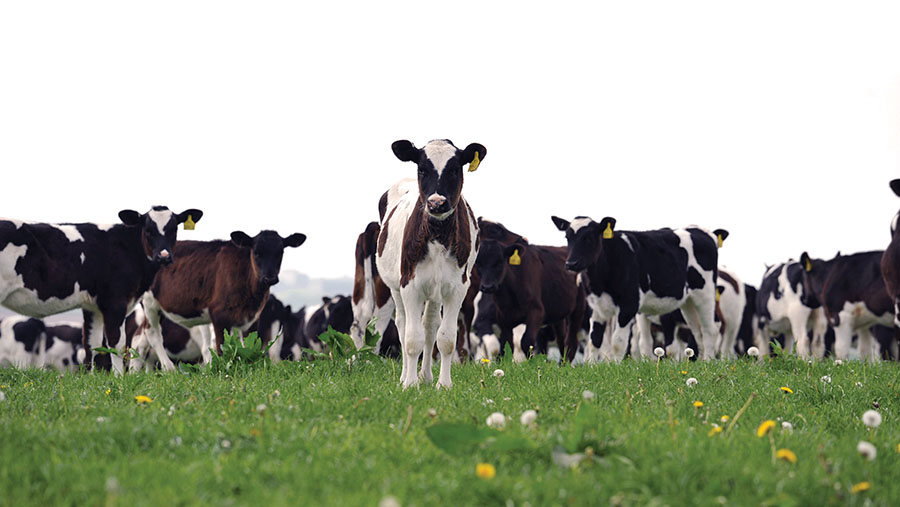
© Debbie James
Challenges and adapting infrastructure
There are some obstacles with fencing and water supply, but both of these can be resolved with a little effort.
Cow water troughs are designed to be 90cm high to prevent contamination by badgers, but this height is too great for calves.
The Mossmans place lower plastic troughs in the paddocks grazed by calves and use a bucket to transfer water from the cow troughs. A water bowser could also be used, explains Mr Mossman.
“When we had groups of 120-130, it was quite a chore, but we only had 60 last year because of our TB situation, so it was manageable.”
To adapt electric fencing, additional pinlock insulators are placed further down the posts and polywire is run along these.
After three weeks, calves are sufficiently knowledgeable about the fencing that it no longer needs to be adapted.
“Compared to turning calves into a paddock and throwing feed at them, our system takes more effort, but it enables us to rear stock as cheaply and effectively as possible.
“One thing to be aware of is that if you are tightly stocked on the platform, the calves do begin to eat a considerable amount of grass and this does affect grass demand.”
Advice on grazing calves
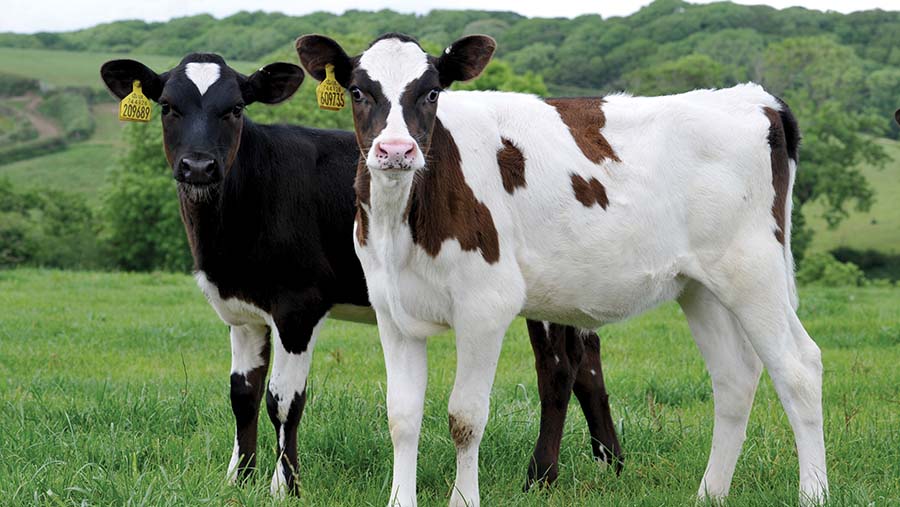
© Debbie James
A four-month-old heifer needs 40MJ metabolisable energy (ME)/day to grow, but she can only eat 3.5kg DM/day, so in grazing-only systems, grass needs to be at least 11.5MJ ME/kg DM.
This quality can be achieved by allowing calves to selectively graze, to get the best pick on the more nutritious forage at the top of the sward.
In a leader-follower system, youngstock with higher nutritional needs graze a number of fields or paddocks ahead of the milking herd, to allow the younger animals to graze the best-quality grass.
Grasstec’s Noel Gowen says this can improve heifer growth rates, allow farms to grow better-quality grass, and has the potential to cut costs and reliance on anthelmintics, as there is good evidence it can reduce worm burdens in pasture.
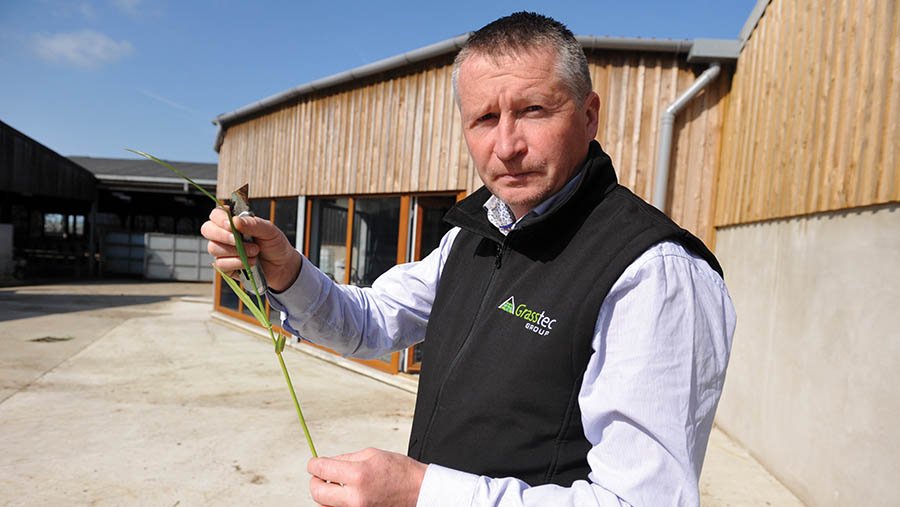
Noel Gowen © DebbieJames
The ideal in a grazing situation is to grow the grass for 21 days and graze it within three days but, when youngstock have dedicated grazing, this is rarely achieved, says Mr Gowen.
Also, in a normal grazing situation it can be difficult to achieve the first rule of grazing – to achieve low residuals – if the stock are young calves in their first year.
“Leader-follower grazing can reduce waste and poor regrowth due to ‘slack grazing’,” says Mr Gowen, which means stock hit residuals.
This is where a leader-follower system comes into play, because young, leafy grass is nature’s equivalent of a concentrate.
Proper subdivision of grazing land into paddocks is essential to successfully manage pastures and achieve desirable rotation intervals.
A 250kg heifer needs 6.25kg DM/day, so a 0.5ha paddock with 2,500kg DM could support 40 leaders for 500kg of growth over two days.
Paddock size is important because if grazing areas are too big, residency times can be too long and paddock productivity significantly reduced, says Mr Gowen.
